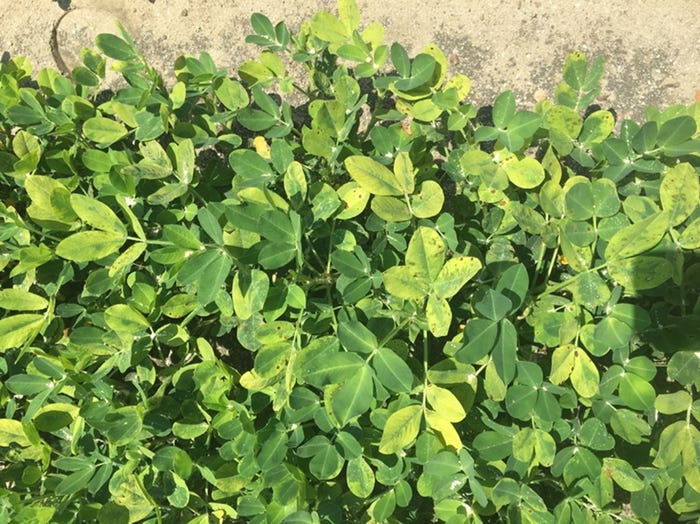February 3, 2021

A whoopsy is defined as a minor mistake, blunder, error or accident. Unfortunately, whoopsies occur at the farm when folks get in a hurry. Every year, I spend a lot of time looking at whoopsies trying to figure out exactly what already happened and what will happen in the future. Sometimes I know and sometimes I do not.
A few years ago, I was on a whoopsy peanut troubleshooting call in Tift County, Ga. When I got out of my truck, I immediately flexed my experienced weed science muscles and proclaimed that what I was observing could only be caused by glyphosate. As usual, I was challenged by the younger but very astute grower who said that there was no way in heck that could have happened. After interrogating him like Perry Mason (a fictional lawyer for you younger readers), it was determined that diuron was recently used in the sprayer. At that point, I had never really observed foliar diuron injury on peanut. Thus, I made a friendly bet with the grower. If it turned out to be glyphosate, then he would pay for the pesticide residue sample. If it turned out to be diuron, I would pay. Sadly, I lost that bet (and a few hundred bucks)!
Since then, I have gotten a few more whoopsy calls about peanut exposure to diuron. Consequently, all of this caused me to conduct a couple of years of research to investigate the potential effects of diuron exposure on peanut. Research is the backbone of my ability to answer questions and solve whoopsies.
A few interesting things that I learned from this research. In addition to the glyphosate-like symptoms, diuron can also cause severe leaf burn (necrosis) if plants are exposed to a high enough rate.
Peanut plants are less sensitive when exposed to diuron at 30 days after planting in comparison to 60 DAP or 90 DAP. Yield results suggest that normal drift rates and spray tank “heel” (stuff in bottom of tank that is left over after cleaning) are not very likely to cause peanut yield losses.
For the record, when peanut or any other crop is accidently or unintentionally exposed to an unregistered pesticide, that crop must be sampled for residues prior to harvest. If none show up, no worries. If a residue is detected, the crop can only be sold if the EPA has established a tolerance for that pesticide and the detected residue level is below that threshold.
A few morals to this whoopsy story:
You are never too old to learn something new.
Gyphosate and diuron cause similar injury symptoms on peanut.
Do not always take someone else’s word that a sprayer is completely clean from a previous pesticide application.
When in a rush to be timely and/or to beat the weather, it is very easy to skimp on sprayer cleanout. Thus, this type of whoopsy and many others are preventable.
As always, good weed hunting!

Foliar peanut injury (chlorosis) caused by Diuron 4L spray tank contamination in Tift County, Ga., 2018.
Read more about:
DiuronAbout the Author(s)
You May Also Like






